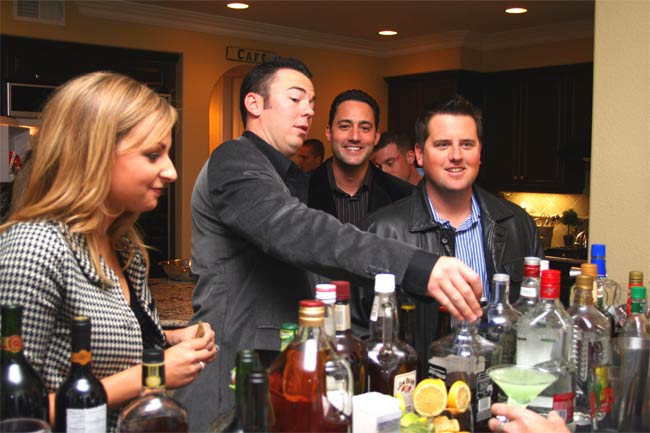Why Does a Guy Use a Wingman When Picking Up Chicks?

The front guy, aka “chick magnet,” always has a wingman at a bar or other night spot. This sidekick appears to offer his services in a selfless manner, helping his friend pick up a girl while he heads home empty handed.
Males of other animals, such as one tropical bird, also practice the pick-up strategy in the wild.
“Why would two guys try to court a woman when only one of them is going to walk away with the girl?” said Daniel Kruger of the University of Michigan. Turns out the thinking that originates from within their jeans is embedded in their genes.
From an evolutionary standpoint, being alone has negative consequences, and moreso for early humans. “Thousands of years ago, living alone was a very risky situation due to both predators and other human groups,” Kruger explained. Nowadays, women are likely to be wary of a loner at a pub. But if he’s with friends, it shows that people like and trust him. In this way, both guys would attract more sultry looks if they pair up.
Perception is everything. How attractive a girl finds a guy could have to do with how he compares with his friend. So the alpha male would benefit by pairing up with a nice yet not too attractive guy to up the chances of winning a girl.
What’s in it for Mr. Wingman? There’s always the chance the beta guy will luck out and attract the girl or one of her friends, and maybe even make his way to alpha status.
“Some day that wingman might be the front man and this other guy in turn will help him out,” Kruger said.
Get the world’s most fascinating discoveries delivered straight to your inbox.
Follow Life's Little Mysteries on Twitter @llmysteries. We're also on Facebook & Google+.
Jeanna Bryner is managing editor of Scientific American. Previously she was editor in chief of Live Science and, prior to that, an editor at Scholastic's Science World magazine. Bryner has an English degree from Salisbury University, a master's degree in biogeochemistry and environmental sciences from the University of Maryland and a graduate science journalism degree from New York University. She has worked as a biologist in Florida, where she monitored wetlands and did field surveys for endangered species, including the gorgeous Florida Scrub Jay. She also received an ocean sciences journalism fellowship from the Woods Hole Oceanographic Institution. She is a firm believer that science is for everyone and that just about everything can be viewed through the lens of science.


